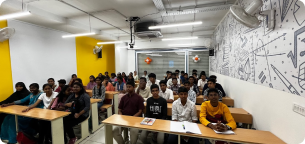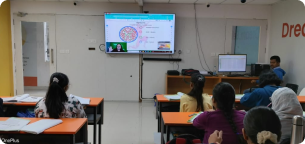




The Adventure by Jayant Narlikar Summary and Explanation for Class 11
"The Adventure" is an intriguing story that blends courage, curiosity, and discovery. It takes readers on a journey filled with unexpected challenges, exciting twists, and profound lessons about bravery and determination. This captivating tale inspires readers to embrace the unknown, overcome obstacles, and discover the hidden potential within themselves. With its engaging narrative and relatable characters, "The Adventure" is a powerful reminder of the transformative power of exploration and resilience in the face of adversity. This summary captures the essence of the story and its timeless message for readers of all ages.
About the Author:
Jayant Narlikar is a renowned Indian astrophysicist, cosmologist, and science fiction writer. Known for his work in cosmology, he has contributed significantly to the understanding of the universe. Narlikar is also celebrated for his literary works, which often blend scientific concepts with imaginative storytelling. His science fiction stories, such as "The Adventure", explore themes like time travel and destiny, captivating readers with their thought-provoking narratives.
Introduction:
"The Adventure" is a captivating science fiction story written by Jayant Narlikar, a prominent Indian author and scientist. The story explores the concept of time travel, weaving together elements of history, adventure, and the profound consequences of tampering with time. It begins with a conversation between a young protagonist and a mysterious stranger in a cafe. As the stranger recounts his extraordinary experiences of traveling through time, the story delves into themes of destiny, curiosity, and the unpredictable nature of historical events. Through a thrilling narrative, Narlikar raises important questions about the impact of individual actions on the larger course of history, making the reader reflect on the significance of each moment in time. The story challenges the boundaries of reality and fiction, offering readers a thought-provoking and imaginative journey into the unknown realms of time.
Plot Summary:
The Adventure summary summarizes the chapter and helps students grasp it. The story is around a historical event, and the protagonist is Gangadharpant. Jayant Narlikar's narrative teaches us how Gangadharpant, Professor Gaitonde, travels through time. The professor wonders what would have happened to India if the Marathas had not permitted the East India Company to stay in Mumbai. He thinks this, plus the Maratha soldiers' mistakes at Panipat, cost a lot. He reads from the Bakhar about Vishwa's tight victory over Abdali when he experiences an accident. Thus, he goes from one universe to another, and we learn about his new world through this story. It's an excellent history and science lesson.
About the Characters of the Adventure
Professor Gangadharpant Gaitonde: A character, Professor Gangadharpant Gaitonde talks about what he does and why. He is a well-known history professor in Pune, and he has a terrible accident that sends him into a different world for 60 hours.
Rajendra Deshpande: The second central character in the adventure. Using the Catastrophe theory and Quantum theory, he explains what happened to Professor Gaitonde by describing no determinism in Quantum theory.
Khan Sahib: This jovial merchant adds a touch of lightheartedness to the story. Serving as Gangadharpant's travel companion in the alternate world, he provides glimpses into the social and cultural fabric of this new India. His presence underscores the ripple effects of historical change, impacting every sphere of life.
Detailed Explanation and Summary of 'The Adventure' in English
Jayant Narlikar wrote an educational and entertaining adventure. He has offered the learner the best of both worlds. The story mentions Professor Gaitonde, a historian. When he goes back in time, he finds something new. He discovers himself in Mumbai, which he has never seen before.
The Mumbai in which he is now is not the real Mumbai, and surprisingly it's very clean, and he discovers train's carriages called 'Greater Bombay Metropolitan Railway.' The staff included British commanders.
The East India Company Headquarters welcomed Gaitonde from the train. Surprisingly his son's office was not also there. So he went to the Library and read about the Panipat fight. Reading the information, he discovers they are not accurate. Curiously, he reads that British rule never reached India.
After the Library, he went to the Azad Maidan and fought with the crowd. Gaitonde fell unconscious at Azad Maidan after being thrown off stage. So he asks Professor Deshpande for clarification. He discovers that reality is not as we perceive it during his tour. So fact has numerous manifestations or aspects.
He'd escaped his time journey. He awoke in a hospital bed, facing Professor Rajendra Deshpande. He told Rajendra everything that happened to him, and Rajendra listened attentively. He demonstrated to Rajendra Deshpande that he'd been elsewhere and was not hallucinating. It was a tattered page from the other world's history book about Vishwasrao escaping death. The tale was given in the book in his universe as Vishwasrao being struck by a bullet and dying. Thus, in our universe, the Marathas were defeated, the East India Company prospered, and so forth.
Professor Gaitonde had the wrong time, he concluded. Professor Rajendra emphasized to Professor Gaitonde that quantum theory lacks determinism and that the route of electrons cannot be anticipated. The electron may be found here in one realm and elsewhere in another. Worlds have their locations, and a parallel universe may exist if the observer knows the exact placement of the electrons in each world.
Hence Professor Giantonde spent two days in an Alternate World. He pondered the catastrophe theory and its application in battle when he hit a lorry, and the Panipat fight also stirred his intellect.
Professor Gaitonde's time-traveling to a different historical moment is explained in Adventure Class 11. This great lesson combines history and science.
Short Summary of The Adventure
"The Adventure" is a science fiction story about a young man who meets a mysterious stranger in a cafe. The stranger shares an extraordinary tale of his time travel adventures, where he witnesses significant historical events. As the story unfolds, the stranger explains how he travelled to the past and observed a crucial battle. The narrative explores themes of time travel, destiny, and the impact of individual actions on history. The protagonist is left questioning the boundaries between reality and imagination, pondering the possibility of time travel and its effects on the course of events.
The Impact on Readers
"The Adventure" goes beyond being just a sci-fi novel; it's a journey into the human spirit and our endless curiosity about the universe. While the gripping storyline keeps readers entertained, it also challenges them with deep ideas.
Delving into intricate scientific concepts like quantum mechanics and alternate timelines, the story takes us on a ride through both time and science. Narlikar, a respected astrophysicist, seamlessly incorporates these ideas, giving us a peek into the captivating world of theoretical physics without losing the human touch.
More than a sci-fi adventure, "The Adventure" is a philosophical exploration of history, choice, and reality. It encourages us to think about the roads we didn't take, the hidden possibilities in our history, and the impact of our choices on the world around us.
This engaging short story leaves us in awe and reflection, pushing us to look beyond the present and explore the vast array of possibilities that could have been and still might be.
Also Check
Conclusion
In "The Adventure," Jayant Narlikar masterfully combines elements of science, adventure, and philosophy to create a literary work that transcends traditional genre boundaries. This captivating journey into the unknown serves as a reminder of the boundless possibilities that await those who dare to explore, both in the vastness of space and the depths of the human imagination. As readers close the final pages of the novel, they are left with a sense of wonder and a newfound appreciation for the mysteries that surround us, inviting them to continue their own adventures of discovery.






FAQs on The Adventure Summary: A Story of Courage and Discovery
1. Prof. Gaitonde had to decide what to do when the world he was living in seemed very strange?
Professor Gaitoride was very surprised when he saw new things and felt like he was reliving history. He was even more surprised when he didn't find his son working for Forbes. Because history was a mystery to him, he thought he could see the answer by going to the Library of the Asiatic Society, So he went to the Town Hall.
2. What did Professor Gaitonde observe as the train approached British Raj territory?
As the railway approached Sarhad, the starting point of the British Raj, an Anglo-Indian in uniform inspected the train for permissions. On the side of the train's blue cars were the letters GBMR—an acronym for 'Greater Bombay Metropolitan Railway.' Each wagon was painted with a little Union Jack as a reminder that they were in British territory. As the train drew to a halt at Victoria Terminus, the station appeared very fresh and spotless. The staff was composed mainly of Anglo-Indians and Parsees, except a few British commanders.
3. When Professor Gaitonde got out of the train, what did he see that was so weird?
When Professor Gaitonde came out of the station, he saw a very tall and beautiful building. People could see that it was the East India headquarters of the East India Company because of the letters on it, which said that it was. He was shocked because it was supposed to have stopped working soon after the events of 1857, but here it was still going strong. This is what happened.
4. What did the victory of the Peshwas do for the East India Company?
What happened to the East India Company when the new Marathas took control of India? Vishwasrao and his brother, Madhavrao, took control of many lands. The Company only had a small amount of power in areas near Bombay, Calcutta, and Madras. However, the Marathas were aware of the importance of the technological age that began in Europe in the 1800s. When the East India Company saw another way to spread its influence, it helped the people who set up their science and technology centers. But they were only taken in so that the local centers could be self-sufficient.
5. Name of Professor Gaitonde Sir and where his son worked?
Vinay Gaitonde is the son of Professor Gaitonde. He works at the Forbes building.
6. Why did Professor Gaitonde feel like he was reliving history?
Professor Gaitonde felt like he was reliving history because everything around him seemed unfamiliar, yet oddly familiar. He was astonished by how the events and people around him mirrored the historical accounts he had studied. This strange sensation triggered his curiosity, and he began to question whether he had truly entered a time warp.
7. What was the significance of the Union Jack on the train?
The Union Jack on the train symbolized British colonial rule, reminding passengers that they were traveling through British-controlled territory. It was a reminder of the British Empire's dominance and the role of the East India Company in shaping the Indian subcontinent during the British Raj era.
8. What was Professor Gaitonde's initial reaction to the sight of the East India Company headquarters?
Professor Gaitonde was shocked to see the East India Company headquarters still standing and operational. He had learned that the company ceased its operations after the revolt of 1857, so seeing it still functional in this alternate timeline made him question everything he thought he knew about history.
9. How did the Peshwas impact the power of the East India Company?
The victory of the Peshwas, particularly Vishwasrao and Madhavrao, greatly diminished the East India Company's influence. The Marathas took control of vast territories, leaving the Company with only limited control near major cities like Bombay, Calcutta, and Madras. The Marathas' focus on technology and self-sufficiency played a significant role in reshaping India's future under the Company’s rule.
10. What was the relationship between Professor Gaitonde and his son Vinay?
Professor Gaitonde had a son named Vinay Gaitonde, who worked at the prestigious Forbes building. Despite their close relationship, Vinay’s work seemed disconnected from his father’s academic and historical pursuits, reflecting a generational gap in perspectives and aspirations.





















